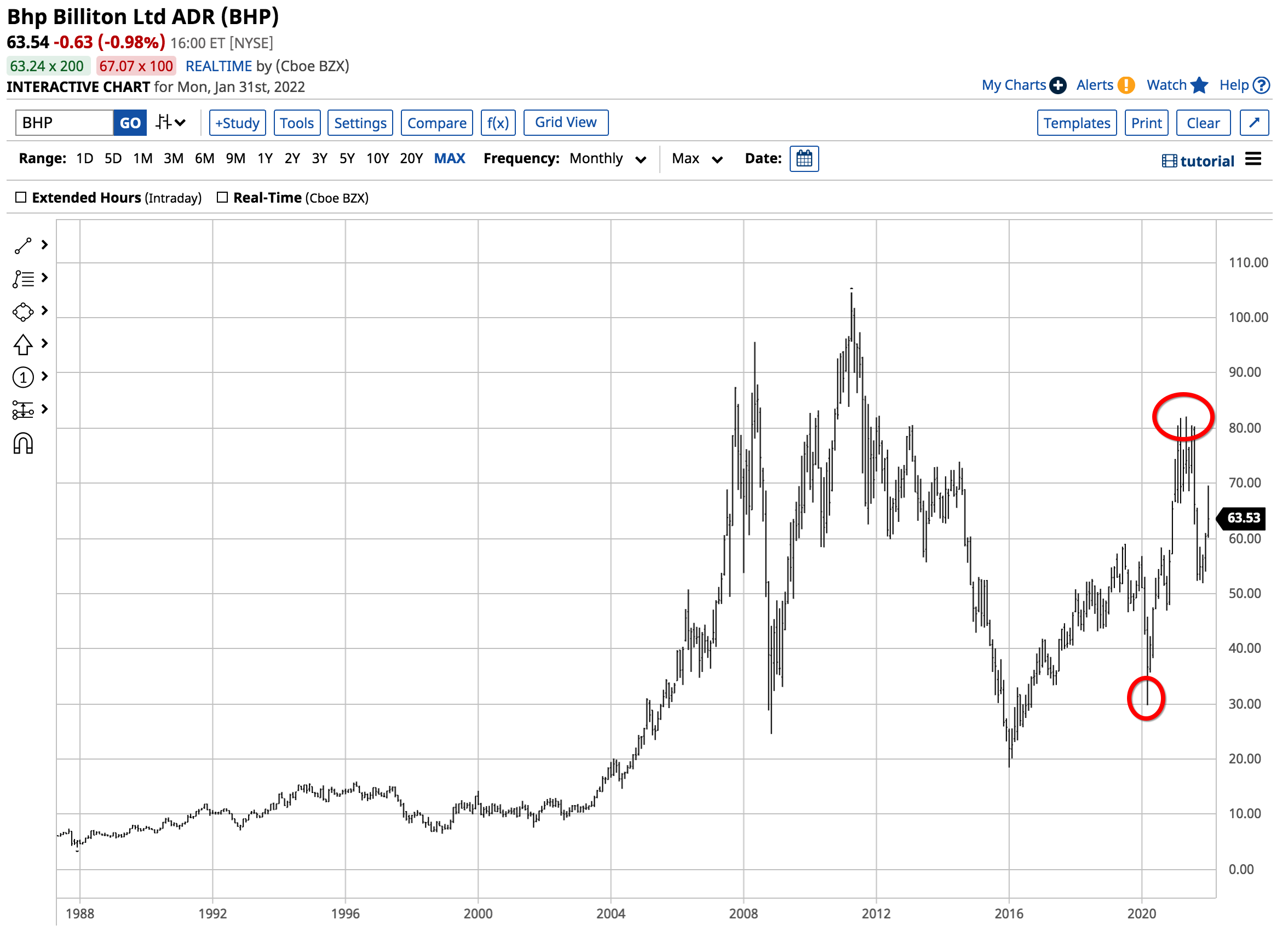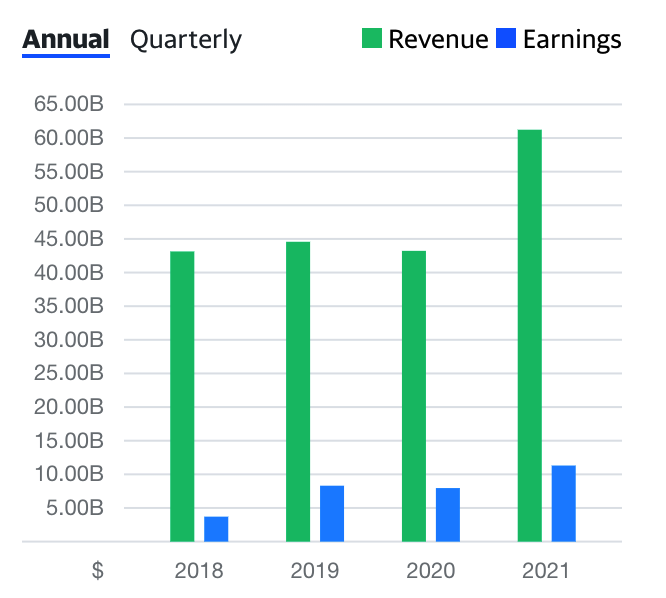This article was written exclusively for Investing.com
- A world-leading natural resource company
- A bullish trend since March 2020
- A correction finds a higher low
- Climate change initiatives support BHP shares
- An above-market dividend
Industrial raw materials are the building blocks of worldwide infrastructure. China, the world’s most populous country, has been the demand side of the raw materials market for years, reflecting its economic growth.
Meanwhile, the metals, minerals and ores from the Earth’s crust have new applications as the world addresses climate change. In fact, Goldman Sachs called copper “the new oil,” saying that decarbonization does not occur without the red base metal. The other nonferrous metals that trade on the London Metals Exchange, including aluminum, nickel, lead, zinc, tin and other ferrous metals and ores are critical ingredients in batteries and other clean energy initiatives.
Metal prices soared in 2021, with copper, the leader of the industrial metals, moving to a new record high. Since the pandemic-inspired early 2020 lows, the trend has been bullish and will likely continue in 2022 and beyond.
BHP (NYSE:BHP) is the world’s leading raw material producer. With a $63.60 share price on Jan. 31, it has a market cap of around $94.5 billion. BHP shares have been rallying since March 2020 but remain below the all-time high from 2011. The increasing demand for industrial commodities and inflationary pressures could continue to push BHP higher in 2022 as the shares look to challenge the 2011 peak, which is over 64.5% higher than on Jan. 31.
A World-Leading Natural Resource Company
BHP Group is a global resources company with headquarters in Melbourne, Australia, and mining interests worldwide. BHP is a leading producer of iron ore, metallurgical coal, copper and uranium. The company’s segments include petroleum, copper, iron ore and coal. BHP produces a host of other commodities described on its website.
The world’s leading publicly traded diversified raw material producing companies as of Jan. 31 are:
- BHP with a $94.5-billion market cap
- Rio Tinto (NYSE:RIO), with a $91.25-billion market cap
- Vale (NYSE:VALE), with a $79.9-billion market cap
- Freeport-McMoran Copper & Gold (NYSE:FCX), with a $52.92-billion market cap
- Glencore (OTC:GLNCY), with a $69.44-billion market cap
BHP is a world leader in the markets that have been red hot since the early 2020 lows.
A Bullish Trend Since March 2020
Raw material prices have exploded higher since March 2020. Most of the commodities BHP produces have risen to multi-year or all-time highs. BHP stock reflects the rise in the resources it extracts from the Earth’s crust.

Source: Barchart
The chart highlights BHP’s ascent from $29.78 per share in March 2020 when the global pandemic gripped markets across all asset classes. The most recent high came in May 2021, when copper reached an all-time high. BHP shares traded to $82.07, more than 175% above the 2020 low. At the $63.60-per-share level on Jan. 31, the stock was still more than double the price in March 2020.
A Correction Finds A Higher Low
BHP shares corrected from the May 2021 high, but the trend remains bullish.

Source: Barchart
The chart shows the decline from $82.07 in May 2021 to a low of $51.88 in mid-November 2021. However, the pattern of higher lows remained intact as BHP shares did not challenge the late October 2020 low of $46.90. The technical support level now stands at the November 2021 low of $51.88.
Climate Change Initiatives Support BHP Shares
Goldman Sachs analysts remain bullish on copper, expecting the LME three-month forward price to rise to $15,000 per ton by 2025. LME three-month forwards settled at $9,916.50 per ton on Jan. 28, meaning the copper market could have a more than 50% upside. Goldman is bullish on copper because there’s “no decarbonization without copper.” The same goes for nickel and many other battery metals BHP produces.
Meanwhile, it takes eight to 10 years to bring new copper and other metal mines into production, leading to a deficit in these markets over the coming years as the demand rises. Goldman expects the deficit to continue pushing copper and raw material prices high, and increasing inflation only exacerbates the trend as it pushes up production costs.
BHP not only produces the commodities that will facilitate addressing climate change, but the company also has targets and a goal for reducing operational greenhouse gas emissions, with a net-zero emissions target by 2050. As the world addresses climate change, BHP is perfectly positioned to profit over the coming years.
An Above-Market Dividend
Rising commodity prices have caused BHP’s revenues and earnings to experience substantial growth.

Source: Yahoo Finance
The chart highlights the rise from 2018 through 2021. The company has been making impressive profits, pushing the dividend higher. BHP’s annual dividend stands at $8 per share, or 12.6% at $63.60 per share. The way-above-market yield pays shareholders while they wait for the stock to move to higher highs on the back of rising revenues and profits from the multinational Australian miner.
The all-time high in BHP shares was in 2011 at $104.59, nearly 65% above the price on Jan. 31. If Goldman Sachs is correct, BHP shares should continue on a bullish path and challenge the 2011 high over the coming years.
BHP is the raw materials producer that should be a core holding. The company should thrive in the current inflationary environment and addressing climate change only strengthens the case for the ascent of its shares.
